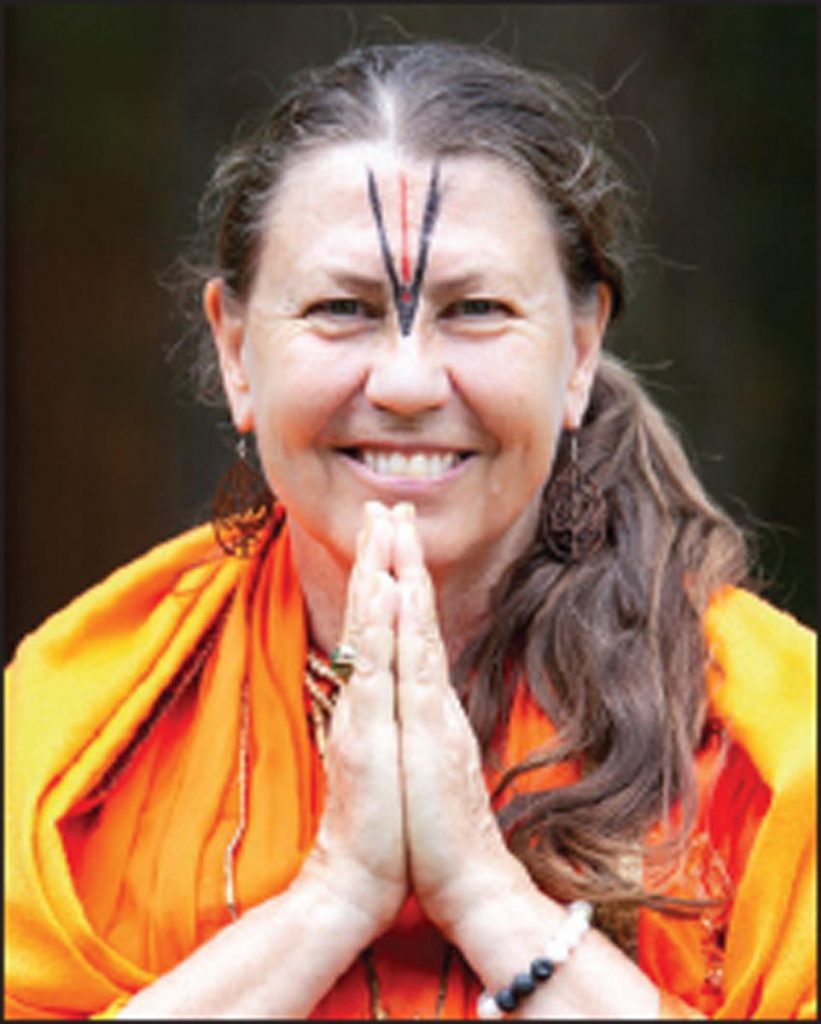Recounting the unexpectedly positive impact of simple Hindu chants with women inmates
BY SWAMINI VISHWAPRATIBHA MA

Hinduism can be intimidating with its plethora of source books, sampradayas and gurus. But there is one Hindu gift that everyone can benefit from immediately, and that’s japa, or chanting mantras.
Before becoming a Vaishnava swamini in the Sri Sampradaya founded by Sri Ramanuja Acharya, I was a freelance writer. I was hired by Social Services here in Canada to write life histories for foster kids. I wrote hundreds of stories of abandonment, abuse and pain. I wove in spiritual wisdom here and there to help these kids learn the lessons from their lives and hopefully forgive the people they felt had harmed them.
I wanted desperately to help them before they, too, grew up to be abusive parents. I felt that somewhere in Hinduism there could be an easy solution, but I realized I had to “fix” myself first. I spent years in India observing sannyas and was made a swamini by my guru, Paramahamsa Vishwananda.
As soon as I arrived back in Canada, I resumed volunteering at the prison for kids, hoping to help in some way. Guruji told me to teach them “Om Namo Narayanaya.” It didn’t matter if these kids believed in “God.” The chant, itself, was God and would help them.
The first young woman I taught had been in the system her whole life. She had run away from foster care and was now in jail for a crime she said she didn’t commit. I met her the night before she was to appear in court. She had refused legal counsel, telling me, “I don’t trust adults. I want my day in court, I want to defend myself.”
“Then you need to learn this chant,” I replied. We spent our hour together playing Jenga (making a tower of small blocks, then removing one by one) and chanting together. She won.
“I want to chant this forever!” She declared. She was absolutely radiating. I assured her it would change her life. She thanked me and was led away. A few days later the prison contacted me to say she had successfully defended herself in court and had been set free.
Week by week, more teenagers learned to chant. Some weren’t interested and just wanted a kind soul to talk to. Others immediately asked about my Vaishnava tilak and the orange clothes and were excited to learn to chant. The guards and staff noticed a gentle change coming over the prison population and asked if I could do something similar in the women’s prison.
I suggested an ancient healing technique done by rishis: chanting Om. There are thousands of Om chanting circles active around the world created by Paramahamsa Vishwananda and His guru, Mahavatar Babaji.
Participation is free, simple and open to all regardless of religious affiliation. The bonus is that it influences a radius of two kilometers outside the circle, rebalancing people without them even being aware. The prison agreed and scheduled an evening for the First Nations women inmates. The event consisted of Om chanting, followed by a Native American drumming circle.
When the night arrived, the shy aboriginal women were led in and I arranged them in two circles, one inside the other. And we chanted. As the sound of “Om” filled the room and drifted out into the corridors, into the cell blocks, I felt Lord Krishna smile. My prison liaison admitted he was surprised how all the women relaxed and became calm. He asked one inmate how she felt and she replied in amazement, “Happy!” That is not an easy emotion to experience in prison. We have all lived in prisons of our own creation. But we can chant wherever we are and set ourselves free.
SWAMINI VISHWAPRATIBHA MA is a member of the Germany-based Bhakti Marga organization. Web: bhaktimarga.org ; Contact: www.bhaktimarga.org/about/leadership
